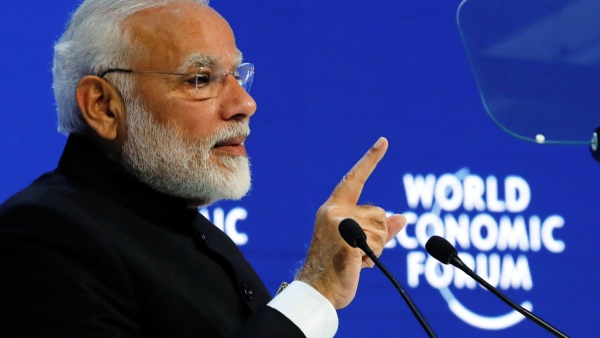The government is working on an economic plan that will provide an immediate boost to tackle the current crisis of growth; and medium-term and long-term blueprints to make India a $5 trillion economy by 2024-25 and a $10 trillion one by 2032, two government officials aware of the development said.
The finance ministry is compiling inputs from different ministries, with the ultimate aim of accelerating growth and creating jobs, and these will be discussed by the high-level committees headed by Prime Minister Narendra Modi, the officials who work for two different economic ministries said on condition of anonymity.
On June 6, the government created two new Cabinet committees under the chairmanship of prime minister — the Cabinet Committee on Investment & Growth, and the Cabinet Committee on Employment & Skill Development.
Economic growth has slowed every quarter since the first quarter of 2018-19. The Reserve Bank of India recently downgraded its growth estimate for the year to 6.9% from 7%. The real estate and construction sectors remain in the doldrums; car sales have declined for nine straight months, with demand for new cars in July around 30% lower from a year ago; and the crisis in shadow banking, a result of the meltdown at IL&FS and later DHFL, hasn’t fully passed.
The government’s immediate objectives are to create demand and boost growth, the officials said. “There is enough liquidity in the banking system. There is a need for banks to pass on the benefits of a lower interest regime to customers aspiring to buy vehicles, homes and white goods. Some policy or administrative directions in this regard is expected soon to boost consumer sentiment before the forthcoming festive season,” one of the two officials said.
Among the proposals on the table, he added, is one to temporarily slash Goods and Services Tax (GST) on automobiles, which is currently in the highest slab of 28%. The government is also working on an attractive package for scrapping of old vehicles to boost auto sales, he said.
The government may also make some institutional arrangement of funds to complete stalled projects and provide more tax incentives to homebuyers to spur demand in the sector, the officials said. Stimulus packages are also expected for labour-intensive sectors such as textile and those services that have the potential to create lots of jobs — e-commerce, hospitality, tourism, telecom and information technology (IT) — the second official said.
The government is also keen on incentivising investments in the manufacture of hi-tech products, the second official added. Communications, electronics and IT minister Ravi Shankar Prasad is holding a meeting of stakeholders from the electronics industry on Monday to discuss issues related to the sector. Top executives of multinational companies such as Apple, Samsung, Lava, Xiaomi, Panasonic, LG Electronics, Dell and Siemens are expected to attend the meeting. The outcome of the meeting will be conveyed to the cabinet committees on investment and employment for policy considerations, the second official said. Prasad has already met stakeholders from the telecom industry.
While the immediate aim of the government is to revive demand, it is committed to make India a $5 trillion economy by 2024-25, a target articulated in PM Modi’s Independence Day speech. Modi spoke about exports, a ~100 lakh crore investment in infrastructure, and a special focus on the rural economy, and micro, small and medium enterprises (MSMEs), and all of these will be reflected in the country’s economic policies, the officials said.
“Eventually the government’s long-term vision is to make India a $10 trillion economy,” the first official said.
Confederation of Indian Industry (CII) director general Chandrajit Banerjee said the PM’s speech on Independence Day has boosted the morale of the industry. “At CII, we estimated that the economy needs roughly around ~450 lakh crore [of investment] in the next 5 years for moving to the 8-8.5% growth trajectory. In that, infrastructure itself would obviously be one of the largest areas of investment, given the massive infrastructure gaps that India has. The PM’s statement of the country getting to that investment cycle is very heartening. We believe that 55% of this has to come from public investments,” he said.
Source: HT
Imae Courtesy:CFR
You may also like
-
Trade Connect E-platform For Exports Is Single Window, Fast, Accessible And Transformational: Shri Piyush Goyal
-
Dot Simplifies Approval Processes For Telecom Licenses And Wireless Equipment
-
Coal Production and Supply Trends on Positive Trajectory
-
Union Minister To Release Booklets On Promotion Of Indigenous Species & Conservation Of States Fishes
-
2nd India-Japan Finance Dialogue held in Tokyo on 6th September, 2024
